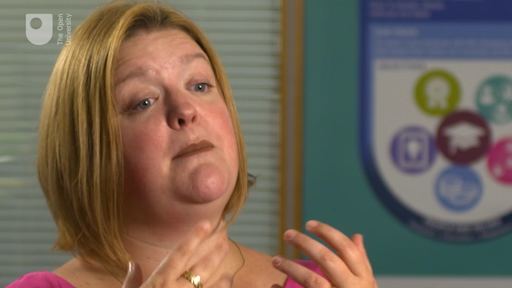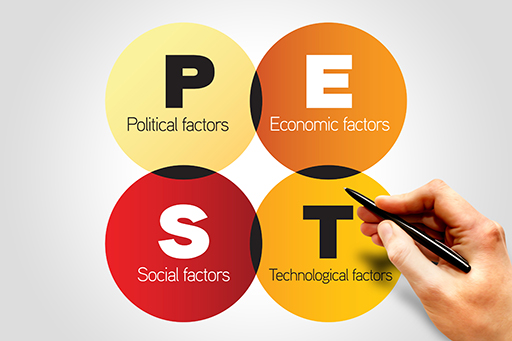3 Using a PEST analysis to identify external factors
In this section, you will learn how to use a PEST analysis to investigate and analyse the external context in which your organisation is located.
As you have discovered, PEST analysis is a common method of identifying the external factors most likely to affect a business or an organisation. When these have been identified, they can be assessed in order to establish their likely impact. There are three steps involved in this process:
- You will need to identify the factors that will have the most impact on your organisation. This will involve research using various sources of information depending on the exact nature of your organisation. Listen to Rebecca and Charlie from Gradconsult explain different sources of information you can use to research your sector including social media and conferences organised by sector associations.
Download this video clip.Video player: boc_uys_1_video_week2_interview_fielding_reeve.mp4


Transcript
REBECCA
There are a number of strategies that you can use to find out about a sector or about an organisation. And obviously websites are the first place that everybody goes. But I would suggest that that is a relatively shallow piece of research. And the vast majority of people now will check a website or websites and be able to regurgitate the same amount of information from having done that.
What really shines out are those people who can go a little bit further and a little bit deeper into the sector. Certainly, one of the easiest things to do is to follow different organisations and different businesses who are prominent within that sector on social media. Follow them on Twitter, follow them on LinkedIn, join in any LinkedIn groups that you can that are appropriate to that sector, and get involved in the conversations. Understand what professionals in that sector are talking about. Read the articles that they’re sharing.
Those are the people that are in the sector that you’re aspiring to. And you will get a much deeper and much more relevant and recent view of the sector by getting involved in those social-media forums
CHARLIE
You can research a sector in many different ways. Start by doing desktop research. You can get an awful lot of information just by doing a few searches.
Have a look and read through industry-related articles and magazines. One of my favourite things to do is go down to the British Library, for example, and take out a book that tells me a bit more information about that sector.
If you want to broaden your knowledge of a sector that you’re already working in – so, you’re a career developer – then you really have to volunteer to go to as many different events that will help expand your knowledge of that sector. So there’s many different conferences or forums you could go to that are not just about what your business does or the business that you’re working in does, but what the wider sector does. There’s often professional associations you can go to to get experience of what’s going on – the sector-wide issues that are currently hot topics and challenges for that particular sector.
Interactive feature not available in single page view (see it in standard view).
- There are some common sources you might want to check.
- Company annual reports frequently include a section scanning the horizon for future possibilities.
- Trade and professional magazines and websites will contain research and comment on the wider context within which their members operate.
- Newspapers such as The Times, The Guardian and The Financial Times have large sections devoted to industrial and commercial news and comment. You can search these online alongside other authorities such as the BBC.
- The British Library puts together industry guides providing industrial overviews and details of sources of information on markets, competition and latest development.
- LinkedIn is not just a collection of individuals – it also has many industrial and professional groups inviting comments and sharing insights. Following individuals or organisations on social media, such as Twitter, can sometimes also provide helpful insights.
- Many professionals and insiders write blogs to inform others, and to encourage discussion and collaboration.
- Visiting trade shows and conferences will bring you into contact with professionals speaking about major issues relating to a particular trade or industry.
- You will need to analyse what these factors mean in terms of their impact or potential impact. This involves realistically assessing how likely, or otherwise, it is that these factors will affect your organisation or sector, and whether this effect is likely to be helpful or not.
- The final step is to prioritise these factors in terms of their relative importance to your organisation or sector so that you know which to consider or tackle first.

